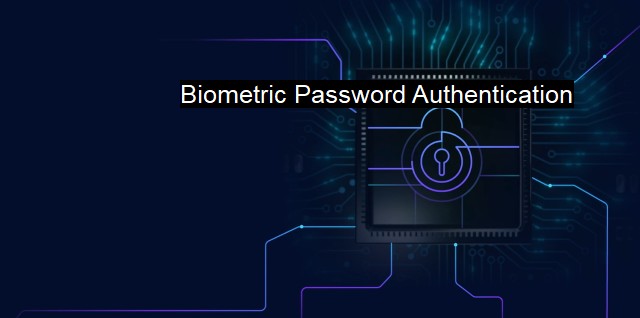What is Biometric Password Authentication?
Biometric Authentication: Enhancing Cybersecurity for Individuals and Enterprises
Biometric Password authentication is one of the advanced mediums used today to implement a high level of protection in the realm of cybersecurity. It involves identification using inherent or unique physical traits such as fingerprints, retinas, or even voice patterns. Presently, biometrics facilitates the creation of even more secure systems that promote a higher degree of assurance. This method is seen to be a tremendous improvement over the conventional forms of authentication systems which use password protection.Typically, passwords have commonly been used to protect a variety of data assets from theft and unauthorised penetration. Though the conventional method of safeguarding data is no longer significantly effective against highly sophisticated attacks mounted by contemporary hackers. This stems from the fact that passwords can be easily lost, hacked, or even overlooked, needing regular change and memorisation, particularly in a climate where almost everything is password-protected. Be it emails, bank accounts, or even airspace control computers, passwords were supposed to be the apparent watch-guard till very recently.
This is where biometric password authentication breaks new ground as it integrates advanced technology to safeguard digital assets and physical spaces. With the rise in cyber crimes, ensuring maximum security is of utmost importance and hence, biometric password authentication holds abundant potential in becoming a reliable medium of identity verification and safety.
Using a person's unique physiological characteristics, biometric password authentication is transforming password-protected spheres. Given that biometric identifiers are unique to individuals, they are more reliable in proving one's identity compared to traditional password-based methods. They are just impossible to lose or forget and exceedingly difficult to copy, counterfeit, or distribute. This is because the 'password' is essentially a part of the human body making it extremely tough for hackers and identity thieves to crack, paving the path for a much more secure future.
Today's biometric systems can include fingerprint readers, voice recognition systems, iris and retina scanners, facial recognition systems, and even methods for scanning a person's veins. Victory in the arena of web security by mitigifying online threats might be an audacious dream the advent of biometrics clearly signifies how such attempts are becoming more technologically sound, precise, and dedicated.
One of the key drivers for the adoption of biometric password authentication is its potential to massively enhance the efficiency of antivirus systems. Antivirus software that is programmed to recognise these physical identifiers can create a significantly deeper layer of security that can preempt and barricade sophisticated breaches.
The integration of biometric and antivirus systems allows for real-time data processing. Unlike commonly used protection systems that operate mostly on stored or static data, biometrics in conjunction with antivirus functionalities cater to live feed, enabling organisations to prevent possible security threats right at the threshold.
No system is perfect, however. Biometric password authentication is not immune from challenges. From a technical implementation perspective, the chief concern is related to fake biometric data. Just as cybercriminals create methods to breach security, methods have been developed to create fraudulent biometrics.
Additional concerns come from a privacy standpoint. Since biometric data is often deeply personal, individuals have concerns about this data being stored and potentially misused. Therefore, organizations need to make sure that they not only protect this data but maintain a level of transparency with users about how their data is being used.
Despite these hitches though, with strategic deployment alongside antivirus software, biometric password authentication can potentially transform the cybersecurity landscape and in the process, amplify trust in the complex network of online services. This presents a gateway into a highly secure future where biometric authentication reduces the risk of digital identity breaches, making our online footprint safe every step of the way.

Biometric Password Authentication FAQs
What is biometric password authentication?
Biometric password authentication is a security method that uses a person's unique physical or behavioral characteristics, such as fingerprints, facial recognition, or voice recognition, to authenticate their identity and grant access to a system or device.Is biometric password authentication more secure than traditional password authentication?
Yes, biometric password authentication is generally considered more secure than traditional password authentication because it uses unique physical or behavioral characteristics that are difficult to replicate. It also eliminates the risk of password theft or brute-force attacks.What are the potential drawbacks of using biometric password authentication?
One potential drawback of biometric password authentication is that a person's physical or behavioral characteristics may change over time, such as due to injury or illness. This could result in login failures or the need to re-register their biometric data. Additionally, there is a risk of biometric data being stolen or manipulated, although this risk can be mitigated through proper security measures.Can biometric password authentication be used for all cybersecurity and antivirus applications?
While biometric password authentication is a useful security measure, it may not be suitable for all cybersecurity and antivirus applications. Some systems or devices may not have the necessary hardware or software to support biometric authentication, or users may prefer to use traditional password authentication. Ultimately, the decision to use biometric password authentication will depend on the specific needs and requirements of the system or organization.| | A | | | B | | | C | | | D | | | E | | | F | | | G | | | H | | | I | | | J | | | K | | | L | | | M | |
| | N | | | O | | | P | | | Q | | | R | | | S | | | T | | | U | | | V | | | W | | | X | | | Y | | | Z | |
| | 1 | | | 2 | | | 3 | | | 4 | | | 7 | | | 8 | | |||||||